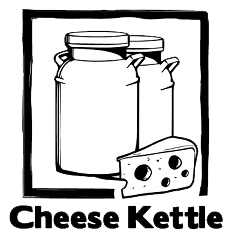Cheese making is a craft, but it isn’t as complicated as it sounds like. Cheese can actually be easy and fun to make, and with the right ingredients, equipment and procedure, you are well on your way. There are ten important steps in cheese making, and in this article, we will talk about each of them.
Step 1: Preparing the Milk
If you are using raw milk, you need to standardize it. This involves pasteurization to kill all the harmful bacteria in raw milk that may cause the cheese to spoil quickly. Milk preparation may also include manipulating the protein to fat ratio.
Step 2: Setting the Milk
Acidification
This is the first process in setting the milk. You will acidify it by adding citric acid or a starter culture like lactic acid bacteria. Adding these ingredients helps the proteins break down and separate from the water. Milk proteins are hydrophilic. They love the water and they stick to it. When this happens, the proteins don’t stick to each other when they collide. You need to break the proteins down so they will stick together to make your cheese.
Coagulation
This is the process of turning the milk from liquid to semisolid. You do this by adding an enzyme called rennet.
Step 3: Cutting the Curd
While heating the milk up to 80 degrees Celsius, you need to stir it for 30 seconds. Let it sit for 5 to 10 minutes to allow the curds to settle. You can tell that your curd is ready when it looks like custard, and you can see clear liquid at the sides of the pot.
Using a chef’s knife, cut the curd into 1-inch squares. You need to be gentle in cutting so you don’t break it up too much. Doing this allows the curds to further expel the whey. Since the curds contain casein proteins and most of the fat from milk, you will notice it float on top of the whey. Generally, cutting the curds into smaller pieces makes the cheese harder. Soft cheeses are barely cut.
Step 4: Processing the Curd
Depending on the type of cheese you are making, you can further process the curds after cutting. This could involve cooking and stirring the curds again. The more the curds are cooked and stirred, the drier the cheese will be. Another way of processing the curd is washing. You do this by replacing the whey with water. Washed curds are more elastic and give a nice, mild flavor. Curd processing affects the texture and taste of the cheese.
Step 5: Draining the Whey
Line the colander with a cheesecloth and gently scoop or pour the curds to the colander to remove the whey completely. You can also use round or square hoops to mold the cheese into your desired shape.
Step 6: Knitting the Curd
As the curds are in the colander, they start knitting together and fusing into one big mass of cheese. Leave the curds on the colander to drain and knit together for another 10 minutes.
Step 7: Pressing the Curd
If you’re making hard cheese, you need to press the curd to remove the remaining moisture and improve its texture. Pressing the curd creates a firm rind on the outside and a smooth and uniform consistency within the cheese. Pressing also makes the cheese ready for aging.
You don’t need to add extra pressure on soft cheeses like mozzarella. Simply allow its own weight to press it. Keeping some moisture in soft cheese gives it the desired texture.
Step 8: Adding the Salt
Salt acts as a preservative to extend the shelf life of the cheese. It also adds flavor to it. You can add salt directly to the curd or rub it on the outside of the wheel of cheese. Another option is to soak the cheese in a brine solution.
Step 9: Special Applications
This step includes anything different that you do along the way to make the cheese unique, like doing something different with its flavor. You can add herbs and spices, infuse the curds with dried fruits and mushrooms, or add other yeasts and bacteria to enhance its quality and taste.
Step 10: Aging
Aging or ripening is the most important step in the cheese-making process. You store the cheese in controlled conditions so they can develop appearance, texture and flavor. Aging may take a few days to several years depending on the type of cheese you are making.
Now that you know the steps in cheese-making, you also need to know the materials and ingredients needed.
Essential Cheese Making Equipment
·Mixing bowls
·Stock pot
·Measuring spoons and cups
·Slotted spoon
·Chef’s knife
·Cheese cloth
·Gloves
·Thermometer
·Round or square hoops or colander
Cheese Making Ingredients
· Milk
·Citric Acid or Lactic Acid Bacteria
·Rennet
·Salt
Cheese making can be a fun and fulfilling hobby. It also offers a promising business potential. If you’re thinking of bringing your cheese making hobby to the next level, but aren’t sure how to start, contact us at Cheese Kettle. We offer consultation services, and dairy and brewing equipment to help your startup. Call us today.
If you want more information about cheese making, read these related articles:
Adding Value to Milk: A Dairy Farmer’s Transformation to a Cheesemaker
Essential Equipment in Cheese Making
What is the Best Milk for Cheese Making: Raw or Pasteurized?

